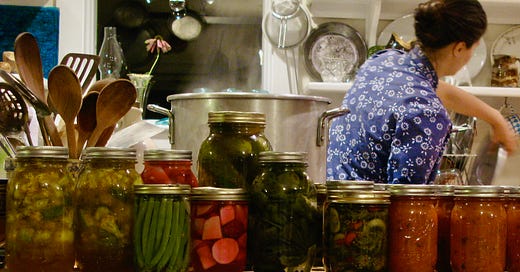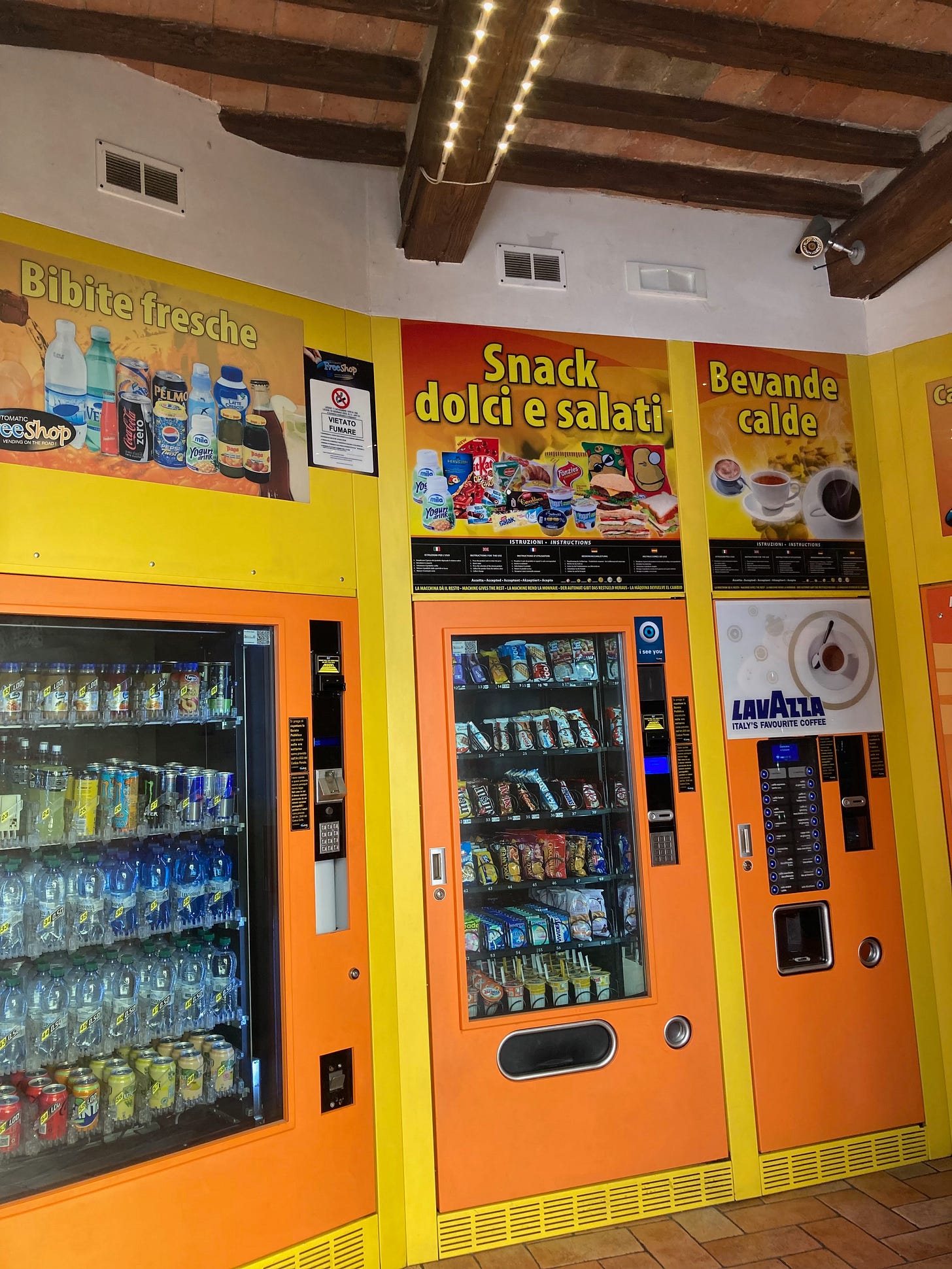Before you go, please tap that little heart in the upper left corner—it means a lot!
Ultra Processed Foods—the Good, the Bad, and the Ugly
Lots and lots and lots of the foods we consume are processed. Think milk, just for a quick and easy example. And cooking in itself is a way of processing—beans, for instance, whether they come from a can or get soaked and drained, simmered and salted, by you, the cook, nonetheless, they’re processed. What worries nutritional scientists and dieticians and public health professionals is highly processed foods—ultra-processed is the current term for it. Why worried? Because the consumption of such food has increased dramatically over the same period of time that there’s been a great increase in chronic diseases (cancer, heart disease, Type 2 diabetes, dementia, you name it, even IBS). Are the two phenomena linked? Most likely, although scientists are not really sure how or why.
Nonetheless, it’s a good idea to take a hard look at your over-all diet and see what kinds of food choices you’re making for yourself and for your family, especially if your family includes growing children. And keep very firmly in mind that this is not a winner-take-all situation. A hot dog at the ballpark or on a school picnic is not going to bring on dementia. But a steady diet of similarly ultra-processed meats, day after day, year after year, might very well have a deleterious effect later in life.
73% of the US food supply is made up of ultra-processed food
Still, when you stare at a statistic like this, you have to worry about the future for Americans: 73 percent of the U.S. food supply, is made up of ultra-processed food, according to Alice Callahan, writing in the New York Times and quoting from a report from the Harvard Chan School of Public Health. The category includes both clearly unhealthy products like sodas, candies, and hot dogs.
Far and away, the biggest culprits are sugar-sweetened drinks (soda pop, fruit drinks, even sweet tea) and processed meats (those hot dogs, of course, along with deli meats like bologna, deli hams, even turkey and chicken sausages, and bacon—yes! the family favorite).
Puzzlingly, apparently “healthy” choices like whole grain breads, breakfast cereals, flavored yogurts, and plant milks, may not always be such a great idea.
Hang on a minute! Whole grain bread? Cereal? Yogurt? Plant milk? Aren’t they supposed to be healthy?
Well, yes and no. Sometimes there’s a trade-off: whole-grain this ‘n’ that may actually contain stabilizers, emulsifiers, sweeteners, preservatives, and the like that we might be better off not putting on the table. Here you really must take a look at labels and decide if you want to trade off the healthfulness of the original ingredient for what may seem like suspect additions. Here are some samples, lifted off the internet (and remember that according to US law, ingredients must be listed in terms of quantity, with the largest amount first, the smallest last, so if sugar is in second or third place, it means quite a lot of sugar in the product):
Yoplait strawberry yogurt: Cultured Grade A Low Fat Milk, Sugar, Strawberries, Modified Food Starch, Water. Contains 1% or less of: Kosher Gelatin, Corn Starch, Carmine (for color), Pectin, Natural Flavor, Vitamin A Acetate, Vitamin D3.
Arnold 12-grain sliced bread: Whole Wheat Flour, Water, Sugar, Wheat gluten, Sunflower Seeds, Cracked Wheat, Rye, Cellulose fiber, Oats, Soybean Oil, Yeast, Ground Corn, Salt, Molasses, Buckwheat, Brown Rice, Preservatives (Calcium Pro-pionate, Sorbic Acid), Monoglycerides, Triticale, Calcium Sulfate, Barley, Flaxseed, Millet, Datem, Grain Vinegar, Soy Lecithin, Nuts [Walnuts and/or Hazelnuts (Filberts) and/or Almonds, Monocalcium Phospate.
General Mills Multigrain Cheerios: Whole Grain Oats, Whole Grain Corn, Sugar, Whole Grain Rice, Corn Starch, Brown Sugar Syrup, Salt, Tripotassium Phosphate, Color (Caramel Color, Annatto Extract), Vitamin E (Mixed Tocopherols) Added To Preserve Freshness, Vitamins And Minerals: Calcium Carbonate, Iron And Zinc (Mineral Nutrients), A B Vitamin (Niacinamide), Vitamin C (Sodium Ascorbate), A B Vitamin (Calcium Pantothenate), Vitamin B6 (Pyridoxine Hydrochloride), Vitamin B2 (Riboflavin), Vitamin B1 (Thiamin Mononitrate), A B Vitamin (Folic Acid), Vitamin B12, Vitamin A (Palmitate), Vitamin D3.
Check the labels, yes, but maybe get out a cookbook and start to do some cooking of real food. If you’re cooking at home you can safely leave out Mixed Tocopherols, Calcium Propionate, Modified Food Starch, and also cut the sugar in almost all recipes. You’ll feel better about what you’re eating. And it will almost certainly taste better too.
Four Pasta Recipes
Because I’m on a writer’s residency program in a remote part of Maine, where I’m trying to pull together thoughts for a new book, I’m taking an easy way out this week and sending you off with four quick and easy pasta recipes appropriate to this season of growing chill and early nights. These will keep you warm and healthy until the sun starts to come back again. All are taken from the book I wrote with my daughter Sara, The Four Seasons of Pasta. Order it if you want right here.
Apologies because the recipes do have to go below a pay wall. All the more reason for you free subscribers to upgrade to paid—and thank you!
Keep reading with a 7-day free trial
Subscribe to On the Kitchen Porch to keep reading this post and get 7 days of free access to the full post archives.





